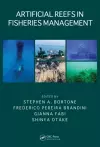
Artificial Reefs in Fisheries Management
4 contributors - Hardback
£145.00
Recently retired as Executive Director of the Gulf of Mexico Fishery Management Council, Stephen A. Bortone now is an Environmental Consultant with Osprey Aquatic Sciences, LLC based in Windham, New Hampshire (USA). As a consultant, he specializes in fisheries and is noted especially as an authority on artificial reefs. Currently, he is also Marine Biology Series Editor with CRC Press. Previously, Dr. Bortone served as Director of the Minnesota Sea Grant College Program with an appointment as Professor of Biology at the University of Minnesota Duluth. Earlier in his career he was the founding Director of the Marine Laboratory at the Sanibel-Captiva Conservation Foundation in Sanibel, Florida, Director of Environmental Science at the Conservancy of Southwest Florida, and Director of the Institute for Coastal and Estuarine Research while Professor of Biology at the University of West Florida. Dr. Bortone received the B.S. degree (Biology) from Albright College in Reading, Pennsylvania (1968); the M.S. degree (Biological Sciences) from Florida State University, Tallahassee (1970); and the Ph.D. (Marine Science) from the University of North Carolina, Chapel Hill (1973).
Dr. Shinya Otake is a Japanese fisheries engineering researcher, and currently serves as Professor at the Marine Environmental Engineering Laboratory, Fukui Prefectural University. He is Chairman of the Design Committee for fisheries infrastructure projects implemented by the Fisheries Agency of Japan, with specific regard to its fishery facilities. Dr. Otake’s research interests have been on the development of artificial reefs and artificial upwelling. In addition, he was instrumental in incorporating acoustic engineering into the design of marine ranching in collaboration with the Penta Ocean Construction Co. Ltd. from 1980 to 1992. He moved to Fukui Prefectural University in 1993 and obtained a doctorate from the University of Tokyo in 1997 while researching the development of upwelling structures.